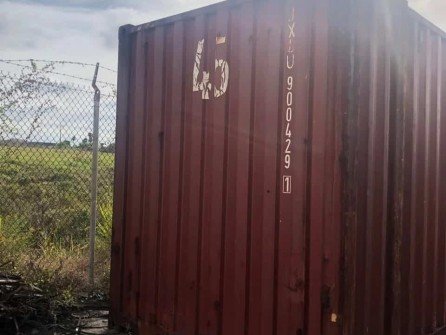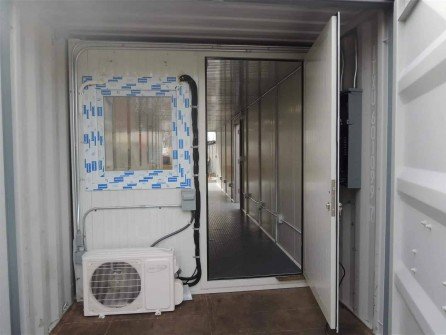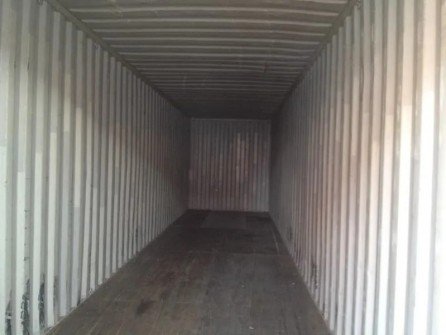We all know a thing or two about the uses of shipping containers, like, how they are used for transportation, storage, or buildings. These rectangular steel boxes have radically changed our lives in ways we don't even realize today. This blog post will take a deeper look into how shipping containers changed the world. First, let's take a brief look at the history of shipping containers.

Trade Before Shipping Containers
The shipping trade existed for thousands of years and allowed people overseas' access to goods. With technological advancements, our ships may have gotten bigger and faster. However, the loading and unloading of goods in the 1940s were not much different from those in ancient times.
The transported goods were loaded and unloaded by the crew piece by piece. This process took a long time and required a huge labor force.
The goods were loaded in individually counted units, such as barrels of wine or sacks of flour. This was referred to as breakbulk cargo, which resulted in lengthy cargo manifests and additional work for port officials and workers. This way made transferring cargo items costly, unreliable, and time-consuming.
Also, since ships were docked with cargo for longer periods were subjected to criminal activities such as theft. As ships earn money at sea, a lot of potential revenue was lost while the ship was waiting at the dock.
Enter Shipping Containers
After World War II, Malcolm McLean, an entrepreneur, bought a shipping company. He saw the need and started tinkering with ideas to make transportation more efficient and affordable. McLean's idea for sealed containers that could be stowed directly onto ships instead of unpacking a truck full of goods and loading them into a freighter was the birth of shipping containers as we know them today. This idea is also called intermodalism.
The benefits of this method are many. Loading and unloading goods became much quicker, required fewer workers, and cut down on theft since ships were spending less time docked at ports.
Shipping container dimensions became internationally standardized after 1968. These standardized dimensions are known as containerization. With the standardization of shipping containers, equipment, ships, and facilities could now be better suited to move and store containers.

What Impact Did the Shipping Container Have on Globalization?
Intermodalism and containerization changed the global trade and supply chain drastically. This new shipping container allowed businesses to flourish worldwide. Shipping containers' arrival changed the port infrastructures around the world.
Most importantly, container depots came into the scene to store the containers safely. The forklifts, cranes, and other mechanisms became popular. With these machines, the costs and the need for manual labor and labor costs were reduced. The global supply chain became synchronized, so delivery and accessibility of goods became easier.
The International Maritime Regulation has made up regulations to keep the emissions minimum by introducing green and biofuel. So shipping containers can move around the world more sustainably.
Why were Shipping Containers such a Profound Technological Advancement?
Throughout the ages, there was little change in the techniques used to transport goods across seas and oceans. Cargo wagons, trucks, and trains eventually brought goods to the port in wooden crates, sacks, and kegs. Next came the loading and unloading of ships. The process has required a lot of labor and time. A persistent issue was theft. Ship loading and unloading would frequently take up more time in ports than the ship's actual sailing time.
New logistical difficulties arose with the start of World War II. Malcom McLean, a trucking entrepreneur, purchased a shipping company following the war, and in 1956 he began shipping product-filled truck trailers that were lifted straight from the truck to the ship.
Now, entire containers were loaded onto ships with efficiency, not just little packages. By employing cargo containers that fit more readily on trucks, trains, and ships, this intermodal transportation method allowed goods to be transported around the world swiftly, affordably, and efficiently.
The shipping industry was completely transformed by the introduction of containers and intermodalism. A growing amount of cargo could be carried over the ocean thanks to the efficient stacking of containers. Since containers were sealed, theft decreased, and labor costs dropped significantly.
In response to the increasing use of containers, the maritime transportation sector as well as the dimensions of trucks, ships, docks, and ports grew over time. Large-scale effects on international trade resulted from lower handling and transportation costs, which in turn caused a boom in trade between countries.
The shipping container contributed to the rapid expansion of international trade by standardizing the transportation of freight across the globe in a reliable, sturdy package. This important invention enables the low costs of many consumer goods that are shipped all over the world.
Conclusion
As you can see, these durable and safe steel boxes changed the transportation game forever. They have affected the modern day-to-day lives of millions of people around the world. The safe and lower cost of shipping goods between countries made more products available to the average person than ever before.
Shipping containers affect our lives in ways that we don't even notice! Next time you're in a market or shopping online, when you see goods from the other side of the globe, you'll now know that shipping containers have changed the world.















